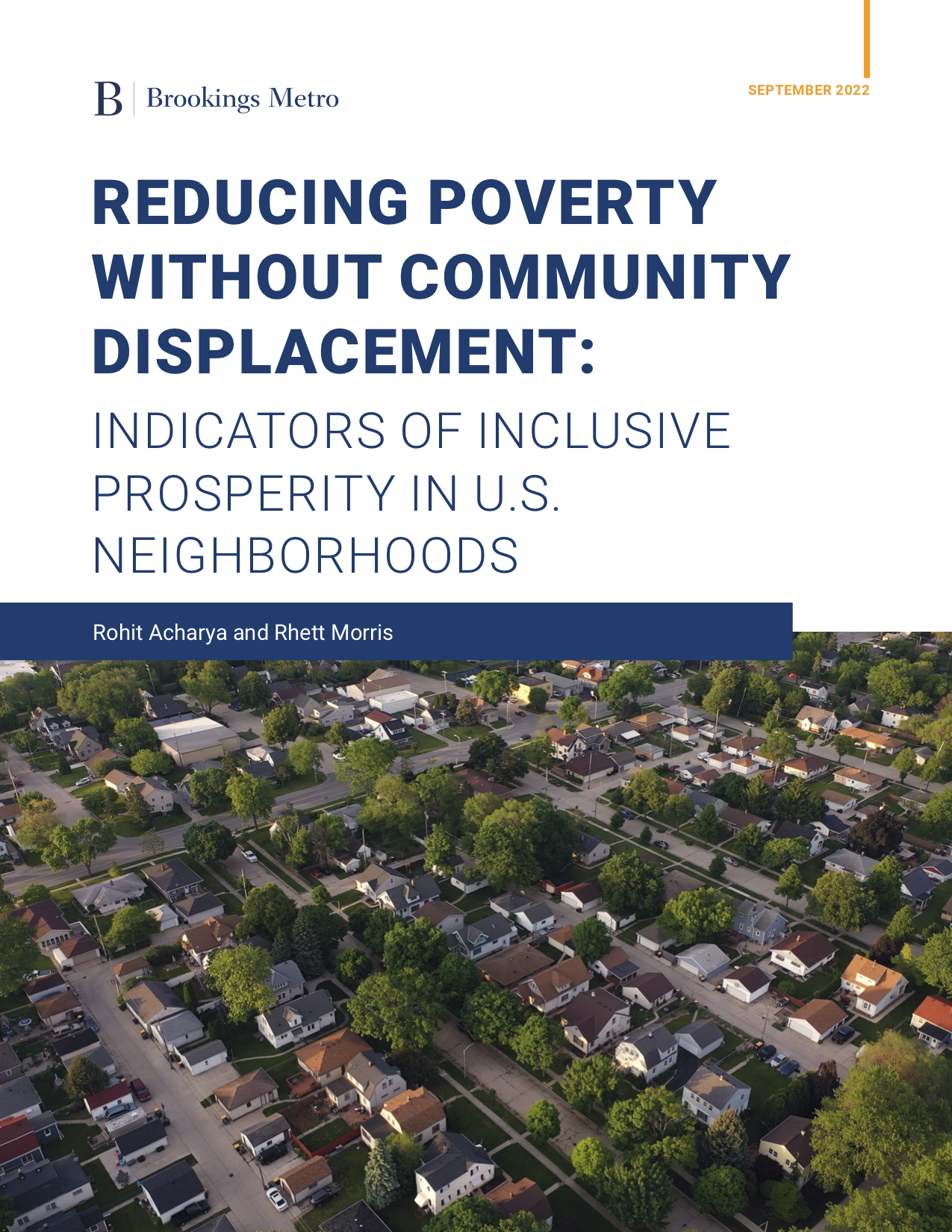Helping neighborhoods reduce poverty without displacement
The Brookings Institution published a new report authored by our partners that offers solutions for decreasing neighborhood poverty and preserving local communities.
This research was created through the support of the Heron Foundation over the past several years. A summary of the study and the full report can be found on the Brookings Institution website here.
What did we learn?
Neighborhoods with concentrated poverty are defined as census tracts where at least 30 percent of residents live in poor households. Around one in 15 people in the United States lives in a neighborhood with concentrated poverty—equal to over 20 million people in total. This includes nearly one in five Black people and one in eight Hispanic people.
Previous research has shown that places with high rates of poverty are deeply harmful. People who grow up in neighborhoods with concentrated poverty earn less money in early adulthood and are incarcerated far more often. Children born in these areas are projected to die 5.7 years earlier than those in other neighborhoods.
Leaders urgently need better solutions to assist these areas. Fortunately, new data and advanced analytical tools have emerged in recent years that can offer new insights about these places. Researchers at Common Good Labs took advantage of these opportunities to share three findings that demonstrate positive change is possible.
Nearly 200 U.S. neighborhoods with concentrated poverty significantly reduced poverty rates without displacing the local community.
We studied data on thousands of U.S. neighborhoods over fifteen years. This revealed something that will likely surprise many leaders. One hundred ninety-three neighborhoods with concentrated poverty achieved a large decrease in poverty rates without displacing their existing communities between 2000 to 2015.
The neighborhoods with these positive changes can be found across the country. Some are close to their city centers, while others are more suburban. Each seems to be impressively resilient. The reductions in poverty they achieved occurred during a period of two major economic crises: the 2001 recession and the Great Recession.
Neighborhoods with large decreases in poverty and no displacement show evidence of inclusive prosperity.
These neighborhoods remained inclusive as poverty rates fell. Retention of local residents was above the national average during the 15 years we observed. The number of people in the largest racial or ethnic group also increased, as did the number of people outside that group.
In addition, we can see evidence of increased prosperity in these places. The property values of local homeowners more than doubled and the number of local small business loans increased significantly, for example. This suggests these neighborhoods became places of inclusive prosperity that benefited the existing community as well as new residents.
Eight indicators of inclusive prosperity separate the neighborhoods with large decreases in poverty rates and no community displacement from other poor neighborhoods.
We used advanced analyses, including machine learning techniques, to study how these neighborhoods on their way out of concentrated poverty were different from other low-income areas. This revealed an interesting pattern.
Eight indicators were much more common in the neighborhoods that went on to have large decreases in poverty rates with no community displacement. These indicators can be useful to leaders in the same way doctors use biological indicators, such as cholesterol levels or resting heart rate, to evaluate individuals’ physical health. Just as with indicators of physical health, better performance on these neighborhood indicators is linked to improved outcomes in the future.
We refer to these eight factors as “indicators of inclusive prosperity” since they are associated with inclusion and increased prosperity as well as decreases in poverty. Three external indicators seem to signal that the environment around a neighborhood supports prosperity.
Positive economic growth in the local metropolitan area
Lower homicide rates in the local county
Low risk of displacement from the surrounding area
Five internal indicators seem to show that a neighborhood enables residents to be included in the prosperity around them.
Higher rates of homeownership
Lower levels of residential vacancy
Increases in housing density
Greater rates of self-employment
Presence of community building organizations
These factors are associated with powerful results. In neighborhoods with all three external indicators and four or more internal indicators, large decreases in poverty rates without displacement are 3.7 times more prevalent.
More information on these findings can be found in the full report.




